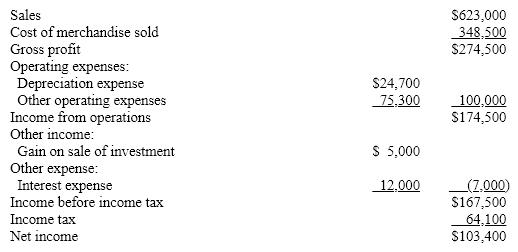The comparative balance sheet of ConnieJo Company, for December 31, Years 1 and 2 ended December 31 appears below in condensed form: 
Additional data for the current year are as follows:
(a) Fully depreciated equipment costing $39,000 was scrapped, no salvage, and equipment was purchased for $157,000.
(b) Bonds payable for $100,000 were retired by payment at their face amount.
(c) 5,000 shares of common stock were issued at $15 for cash.
(d) Cash dividends declared were paid $28,000.
(e) All sales are on account.
Prepare a statement of cash flows, using the direct method of reporting cash flows from operating activities.
Definitions:
Modern Times
refers to the period of history starting from the late 19th century to the present day, characterized by rapid technological advancements, industrialization, and changes in social, economic, and political structures.
Factory Work
Employment in manufacturing settings, typically characterized by assembly-line production and specialization of tasks.
Productivity
A measure of the efficiency of production, often quantified as the ratio of outputs produced to inputs used in the production process.
Hour Worked
A measure of the amount of time spent performing tasks or duties for an employer during a specified period.
Q43: Which of the following is considered non-value-added
Q86: Which of the following is not considered
Q109: Under the direct method of preparing a
Q112: The average rate of return method of
Q120: A backflush accounting system uses work in
Q124: What information is generally included in the
Q141: Which of the following is an example
Q163: Below is a table for the present
Q168: Which of the following is not a
Q183: The plant manager's salary in a manufacturing